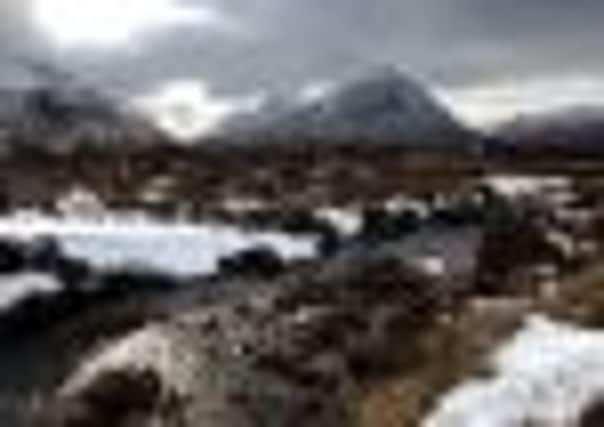Roger Cox: Consider Glencoe’s intrepid pioneers


Like the UCI Mountain Bike World Cup at Fort William or the now sadly defunct O’Neill Coldwater Classic surf contest at Thurso, the Coe Cup is the kind of dramatic, photogenic sporting event that nobody seems to think can happen in Scotland. But having witnessed last year’s contest from a somewhat soggy vantage point beneath Buttress Rock in the middle of the main run – taking regular facefulls of spray from competitors as they flew past – I can assure you that there will be real skiers and snowboarders launching real tricks off real cliffs and landing them on real snow. Yep, just like they do in the Alps, just like you see on the telly.
Freeride is arguably the purest of the competitive snowsports disciplines. There are no poles to weave around as in slalom, no man-made jumps as in freestyle. There is a start line at the top of the hill and a finish line at the bottom, but how competitors choose to ride the mountain between those two points is entirely up to them. It’s not a race – instead, riders are scored on the difficulty of the line they attempt and the fluidity and style with which they ride it, so the guy (or girl) who links a series of jumps and cliff drops will always outscore the guy who simply high-tails it for the bottom. All of which is good news for spectators, because – in contrast to the downhill disciplines – it means that no two runs ever look the same.
Advertisement
Hide AdLast year’s contest drew some of the best freeriders in Scotland, and the performance level was jaw-droppingly high, with one skier riding the steepest section of the hill backwards and others mixing spins and backflips into their routines. This year, however, the standard promises to be even more impressive: the Coe Cup has been made an official qualifying event for the glamorous Freeride World Tour, and as such is expected to attract a smattering of up-and-coming riders from Europe, as they try to amass enough points to break into the sport’s premier league. The snow conditions are looking better too – Glencoe owner Andy Meldrum reckons this year’s course should be at least twice the length of last year’s, giving riders more choice when selecting possible routes down the hill and also giving spectators more opportunities to get close to the action.
There’s no doubt that the current crop of Scottish skiers and boarders have taken riding the Flypaper to a whole new level in recent years, but even the best of them would probably agree that their exploits pale into insignificance when compared with the achievements of the first generation to take on this part of the hill.
Harrold Thomson, 84, first skied the Flypaper in the 1960s and he likens it to a rite of passage. “It’s one of these things that has to be done,” he chuckles.
One of the steepest in-bounds runs in Europe, the Flypaper is as serious a challenge as you’ll find at any ski resort. The angle changes slightly depending on how deep the snow is, but most estimates put the pitch at between 40 and 45 degrees. For most of today’s skiers and boarders, armed with all the latest kit, simply getting from the top to the bottom without falling is a major achievement, yet Harrold and his friends skied it on heavy wooden skis over two metres in length. I ask him if he was scared the first time.
“Oh yes,” he says, “it’s very steep. It looks as if you’re just going down into an abyss. I know a couple of people who had quite bad accidents, although they’re both still alive to tell the tale.”
Harrold still skis regularly at Glencoe, using short, modern skis. He says it’s ten or 15 years since he last tackled the Flypaper, but if he had to do it again he’d want his old wooden 205s back.
Advertisement
Hide Ad“I’d prefer something a bit more stable,” he says, “something that keeps the line. It’s quite important to keep the line up there because there are sometimes a few rocks half way down that you have to avoid.”
Coe Cup competitors may wish to heed his advice about those rocks, even if they decide to pass on the wooden skis.
• www.glencoemountain.com/events.html